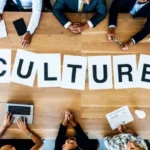In today’s interconnected world, the blending of cultures has become more prominent, giving rise to what is often referred to as “2nd culture.” This concept explores how individuals and communities adapt and integrate cultural elements from multiple origins, particularly in the face of globalization. But what exactly is 2nd culture, and how does it shape identity? Let’s dive in to explore this fascinating topic.
What is 2nd Culture?
The term “2nd culture” refers to the cultural influences that an individual or community adopts beyond their native culture. This typically happens when people move to a new country, grow up in multicultural environments, or engage with global media and technology. Unlike the primary culture, which is the culture you are born into, 2nd culture is learned, experienced, and assimilated over time.
In essence, 2nd culture is shaped by experiences with different traditions, customs, and social norms. It plays a significant role in how individuals perceive themselves and others, contributing to the formation of a unique, hybrid identity that is not bound to one specific heritage. 20 Words Associated with Culture: Unpacking the Language of Tradition and Society
The Impact of Globalization on 2nd Culture
Globalization has been one of the primary forces driving the emergence and spread of 2nd cultures. In today’s global society, people are constantly exposed to new ideas, practices, and traditions from around the world, making it easier to adopt and incorporate them into their daily lives.
Globalization encourages a fluid exchange of cultural elements, from fashion and food to language and social values. This cross-cultural interaction enriches personal and collective identities, but it can also create challenges related to balancing traditional values with modern influences.
How Does 2nd Culture Shape Identity?
Identity is no longer as static as it once was. The concept of 2nd culture illustrates that identity is constantly evolving, influenced by various factors, including migration, education, and media exposure. Here are a few ways in which 2nd culture shapes identity: Unveiling the Mystery of the Unbreakable Kryptos Code: A Puzzle That Defies Decoding
- Cultural Adaptation: As individuals immerse themselves in different cultures, they adopt practices and values from those cultures, creating a blended sense of identity. This can include language, fashion, social behaviors, and even religious practices.
- Bicultural or Multicultural Identities: In some cases, individuals may develop a bicultural or multicultural identity, meaning they feel equally connected to more than one culture. This can be seen in immigrant communities where people navigate both their native and adopted cultures.
- Challenges of Balancing Cultures: While embracing 2nd culture can be enriching, it can also pose challenges. Individuals may struggle with finding a balance between maintaining their original cultural identity and assimilating to a new culture, leading to feelings of cultural dislocation or identity conflict.
2nd Culture in Different Contexts
The concept of 2nd culture is not limited to individuals who migrate to new countries. It can also be seen in people who grow up in multicultural communities or are exposed to global media. Let’s look at a few contexts where 2nd culture plays a role:
- Migrants and Expats: Individuals who move to new countries are often the most obvious examples of people who experience 2nd culture. They must learn to navigate the customs and social norms of their new country while maintaining ties to their native culture.
- Children of Immigrants: Second-generation immigrants often experience a unique blend of cultures, as they grow up in one culture at home and another in the broader society. This can lead to a hybrid identity that draws from both cultures.
- Global Media Influence: Exposure to international movies, TV shows, music, and social media can lead to the adoption of cultural elements from different parts of the world, even for people who have never traveled outside their home country.
The Role of Technology in 2nd Culture
Technology, particularly the internet and social media, has made it easier than ever to engage with multiple cultures simultaneously. People can access information about different traditions, customs, and lifestyles at the click of a button, making it easier to incorporate aspects of these cultures into their own lives.
For instance, online communities allow people to engage with others from around the world, sharing their cultural practices and learning about others. Social media influencers and content creators often play a role in popularizing global trends, further contributing to the rise of 2nd culture.
Embracing 2nd Culture: A Path to Global Understanding
One of the most significant benefits of embracing 2nd culture is that it encourages open-mindedness and global understanding. When individuals adopt elements of another culture, they often become more empathetic and aware of the diversity of human experiences. This can foster stronger connections between people from different backgrounds and help bridge cultural divides.
However, it’s essential to approach 2nd culture with respect and understanding. Cultural appropriation, or adopting aspects of a culture without understanding or respecting its significance, can lead to misunderstandings and reinforce stereotypes. Instead, embracing 2nd culture should be about mutual respect and appreciation for the richness of diverse traditions.
Practical Tips for Navigating 2nd Culture
For individuals experiencing 2nd culture, here are some practical tips for navigating the complexities of cultural adaptation while preserving your sense of identity:
- Stay Open-Minded: Be willing to learn from and appreciate different cultural perspectives, even if they differ from your own.
- Find Common Ground: Look for commonalities between your native culture and the new culture to help ease the transition and reduce feelings of cultural conflict.
- Stay Connected to Your Roots: While it’s important to embrace new cultures, staying connected to your native culture can provide a sense of stability and identity.
- Engage with Local Communities: Participate in cultural activities and traditions within your new community to gain a deeper understanding and appreciation of the local culture.
- Avoid Stereotyping: Be cautious not to oversimplify or stereotype cultural practices. Instead, seek to understand the depth and significance of cultural traditions.
Conclusion
The concept of 2nd culture highlights the fluid and dynamic nature of identity in a globalized world. As people move, interact, and engage with different cultures, they form new and diverse cultural identities that reflect their experiences. While embracing 2nd culture can be challenging, it also offers opportunities for growth, understanding, and connection in an increasingly interconnected world. By understanding and navigating 2nd culture, individuals can find a sense of belonging and build bridges between cultures, ultimately fostering a more inclusive and empathetic global society.



